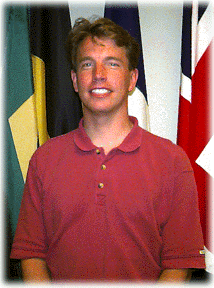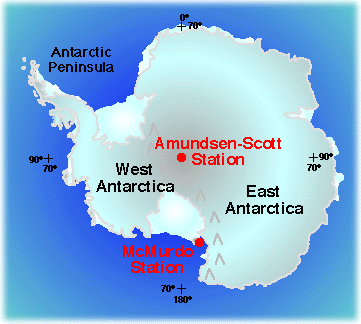
|
|







My project involved working at an astrophysical observatory at the South Pole! The observatory is run by the Center for Astrophysical Research in Antarctica, and it was built there because atmospheric conditions over the polar plateau are the best in the world for collecting certain types of astronomical data. Earth-based telescopes must contend with atmospheric effects (absorption and emission of energy by atmospheric parcticles) that interfere with detecting radiation from elsewhere in our universe. However, the air above the South Pole is so dry, and the interference from infrared radiation is so slight, that observations can be made here that otherwise would be possible only from telescopes in space!
Astronomers use light at many different wavelengths to investigate the universe. Light in wavelengths our eyes can see (visible light) can be used to study planets, stars, galaxies, and glowing clouds. Astronomers also use light at wavelengths longer than those of visible light: infrared, sub-millimeter, and microwave light. Infrared wavelengths are used to study developing stars. Sub-millimeter wavelengths are used to study molecular clouds and the energy dynamics of star formation. Microwave light is used to figure out how the universe itself came into being! It is present throughout the universe, left over from the "Big Bang" that started everything. Over most of the planet, our atmosphere is not very "transparent" to light wavelengths that our eyes do not see. A big problem for astronomers is water vapor - it interferes with detection of infrared light, and it blocks sub-millimeter radiation. This is a major reason why the extremely dry air and clear skies over the South Pole are a great advantage!
There are three major telescope facilities at the South Pole observatory, located in the coldest and driest desert on Earth. The observatory is much less expensive to operate than a telescope in space, yet it can yield some of the same results as an orbital platform, thanks to the properties of the atmosphere here.

Amundsen-Scott South Pole Station! Home away from home for Fred! Photograph courtesy of D. Tedeschi, TEA 1996/1997.


Return to top of page
|








